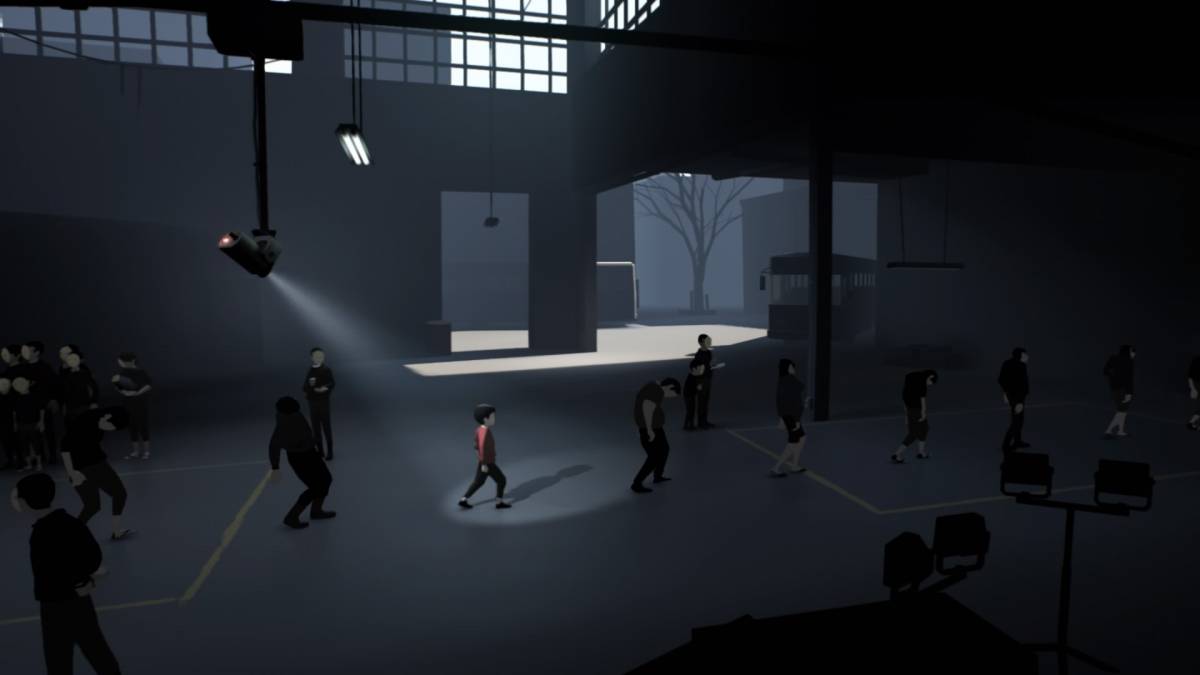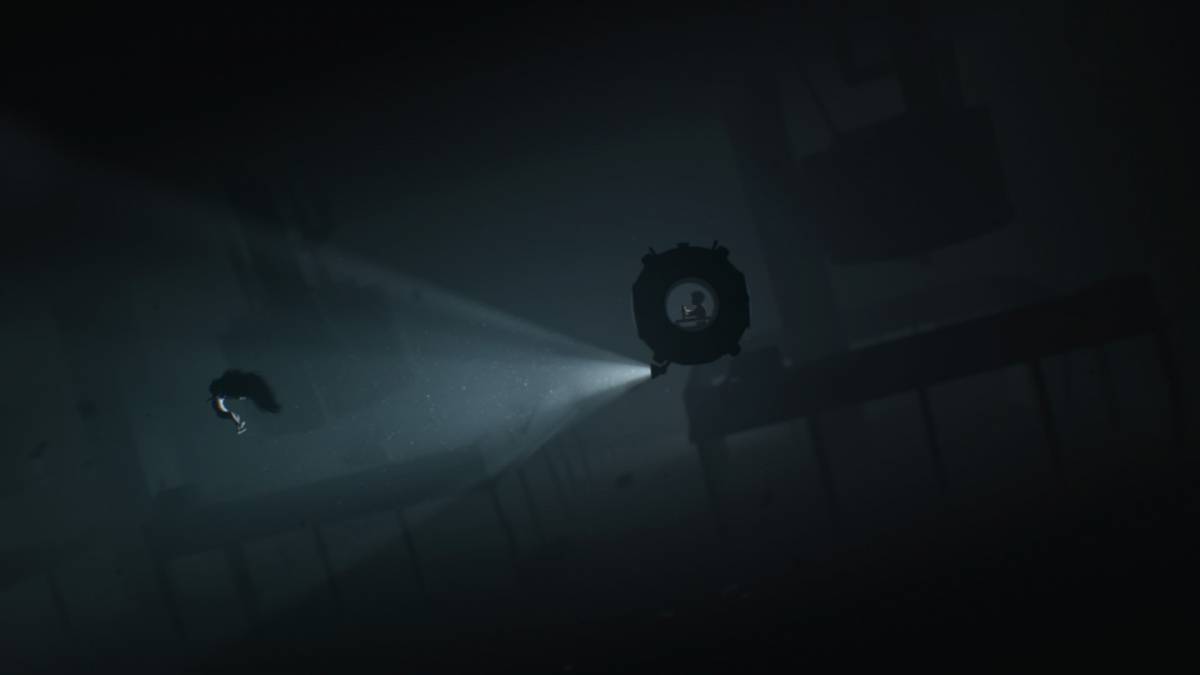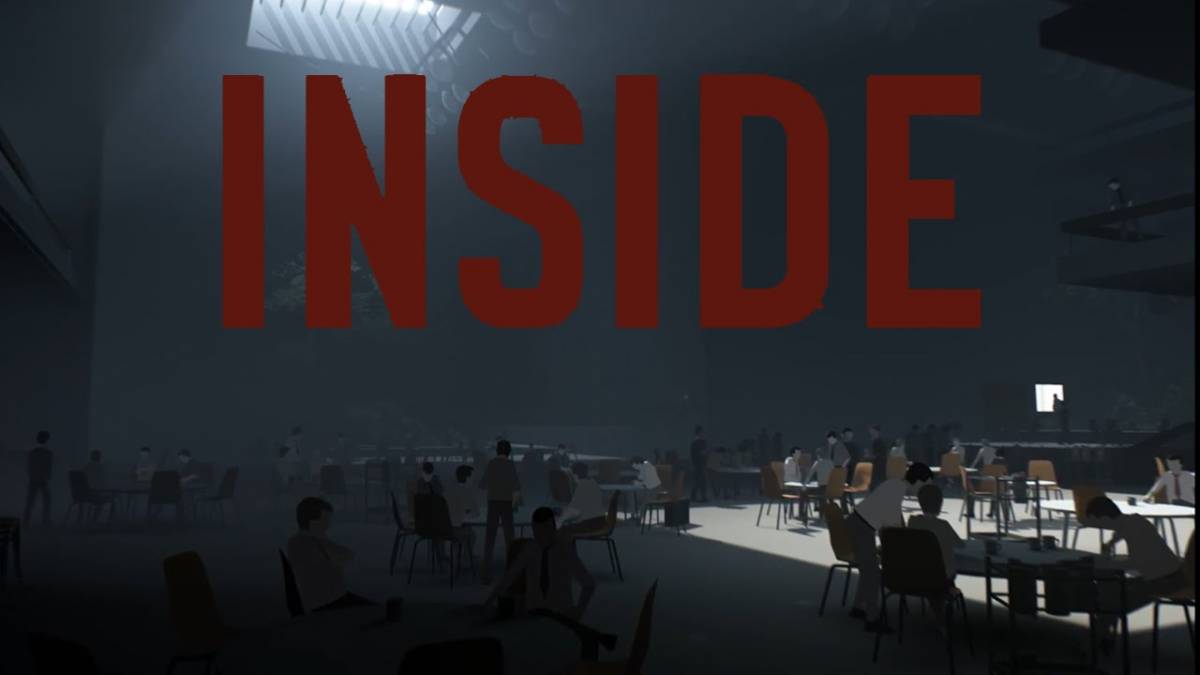Where to begin with Inside? The latest game from Limbo developer Playdead, Inside puts you in control of a young boy running from an unknown threat. Trying to survive in an increasingly hostile world, the nameless child powers forward in an attempt to reach some kind of refuge…or, at the very least, a brief respite from the impending death that’s always just one step behind.
To divulge any more of the plot would be unnecessary, because the desire to find answers to the game’s many questions is one of the main driving forces to your journey. Without any dialogue or text, Inside manages to snatch your attention and hold it tightly for the entirety of its 3-4 hour playtime. There’s no guarantee that all of the loose-ends will be tied, but if Limbo’s narrative has taught us anything, it’s that theorising can sometimes be far more rewarding than conclusive endings. Just to note: this isn’t a sequel to Limbo, so despite me mentioning it several times throughout this review, take the games as two separate experiences.

But let’s not get ahead of ourselves here: How does Inside actually function as a game? Well, rather simply, as it turns out. You’ll primarily be using three buttons to make your way through its dreary landscape: X to jump, Square to grab objects, and the control stick to manoeuvre left or right (bearing in mind I played the PS4 version of the title). With this simplistic control scheme, Inside manages to introduce a seemingly limitless amount of creativity when it comes to solving puzzles, as you’ll rarely repeat the same tasks multiple times in a row.
For instance, some puzzles might require you to take control of some lifeless drones, and use their brute strength to move objects in order to allow progression. At other times, you’ll need to learn the timing of a puzzle so that you can slip neatly under a closing door before it halts your progress indefinitely. Surprisingly, there’s even times at which you’ll pilot a handful of vehicles to traverse terrain that would otherwise be deadly to the young protagonist. Arguably, these vehicular segments of the game were the weakest, because they required the most back-tracking to complete. In a game that boasts such consistently stellar gameplay, however, this is entirely forgivable – some people might even prefer these sections to the main bulk of the game.

Though the gameplay of Inside is what will keep you going for hours on end (and it’s entirely possible to play the entire game in one sitting), the aesthetics on offer are truly exceptional at times. Visually, the game is simplistic yet beautiful. Intentionally vague, the several enemies you’ll encounter throughout your journey are sinister and clearly dangerous, and being hunted by them can often be more stressful than several horror titles of recent years. Personally, I preferred the monochromatic style of Limbo, but I really think that it’s much more of a subjective thing than definitively one way or the other.
It’s the audio of Inside where the experience really shines. If I can offer one piece of advice before picking up the game, it’s to make sure that you have a decent pair of headphones and that you wear them for the entire game. The sound design is absolutely haunting at times, and yet the gentle pitter-patter of rain on a lake can offer a brief scene of serenity amongst a sea of deadly encounters and traps. While the actual soundtrack to the game is minimal at best, it can be immensely effective when it comes to creating an atmosphere. One moment in particular that shines is when you’re swimming in murky waters, being chased by a horrific water creature. As the creature nears, the pitch rises and rises to unbearable levels, which makes climbing onto shore at just the right time so much more meaningful. For most of the game, it’s the complete lack of sound that makes events even more harrowing; particularly when it comes to the many deaths you’ll fall victim to throughout your time with Inside.

Just like Limbo, the death animations of Inside can be downright disturbing. While the game may function in a manner that could be handled by a child, the at times brutal deaths certainly prove that this is not a game for younger audiences. Guard dogs will pin you down and tear at your jugular, security guards will choke you on the spot, and god help you if you’re caught by a searchlight out in the open. I’m glad that Playdead decided to keep the morbid nature of the game from Limbo, because it makes failure feel so much more devastating. Regardless of how many times you succumb to death, though, a generous checkpoint system will have you up and about again in mere seconds.
My only real faults with the game come down to pure subjectivity. For example, I personally preferred the narrative of Limbo compared to Inside, though both games tell their respective stories in a vague manner. Without delving into spoilers, I felt a little underwhelmed by the way in which the game came to a close, but only because it began so promisingly; running through the forest, being chased by gun-wielding entities. Something that I feel will be unanimous is that some of the game’s later puzzles require a little too much back-tracking, like I mentioned earlier. However, the satisfaction of completing the tasks presented to you often outweighs this, so it’s completely forgivable.
Some of the coverage you find on Cultured Vultures contains affiliate links, which provide us with small commissions based on purchases made from visiting our site.

